Year after year, season after season, traces of amusement parks past flicker out of existence. From historic dark rides to classic coasters; beloved landmarks to entire parks, sometimes, no amount of history, nostalgia, legend, or love can save a classic. Though Park Lore’s collection of Lost Legends is stocked with the stories of beloved theme park favorites of yesteryear, there’s no story as staggering as that of Geauga Lake.
You may never have even heard of the little amusement park nestled into the hillsides southeast of Cleveland, Ohio. But its story is one that sounds too wild to be true: a full-sized Six Flags and a full-sized SeaWorld, facing each other across a spring-fed lake that – literally overnight – merged into a single, gargantuan super-park. Mega-coasters, killer whales, dizzying flat rides, a Batman water ski show, dolphins, log flumes, waterslides, tigers, penguins, and motion simulators for one price, Six Flags Worlds of Adventure stood a chance at becoming the best amusement park on Earth… and more to the point, a fitting rival for Cedar Point just an hour and a half west…
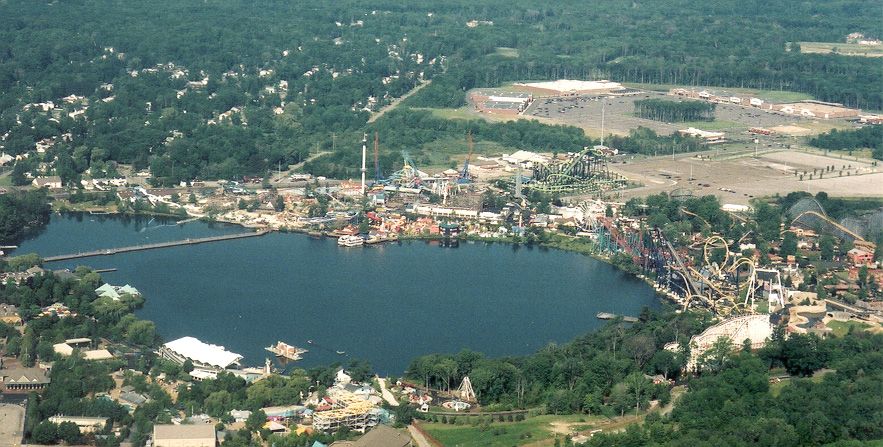
But less than ten years after it debuted, the 300-acre property was bulldozed out of existence. Six Flags Worlds of Adventure burned bright and fast, and in its smoulder, it also burned down 120 years of history. How did Six Flags and SeaWorld find their way to Aurora, Ohio? How did they combine? Who’s responsible for the death of “the world’s largest amusement park”? Sit back, settle in, and join us for the epic tale of Geauga Lake…
And before we head off, remember that you can unlock rare concept art and audio streams in this story, access over 100 Extra Features, and recieve an annual Membership card and postcard art set in the mail by supporting this clickbait-free, in-depth, ad-free theme park storytelling site for as little as $2 / month! Become a Park Lore Member to join the story! Until then, let’s start at the beginning…
A Most Charming Place
For many fans of the “themed entertainment” industry, all roads tend to lead back to Disneyland. It’s true that Walt Disney’s 1955 park was a landmark, and that he and his Imagineers quite literally wrote the rules as they went. But long, long before the conventions of the modern “theme park” were born by way of that little fantasy park in Anaheim, California, America was still dotted with places built for fun.
Even by the turn of the century – 50 years before Disneyland! – increasing automation and a second wave of the Industrial Revolution had given many American families something entirely new: leisure time. So it’s no surprise that in the early 1900s, the country’s coastlines sprung to life with seaside boardwalks and pleasure piers, each lined with vendors and amusements built to attract wandering beachgoers.
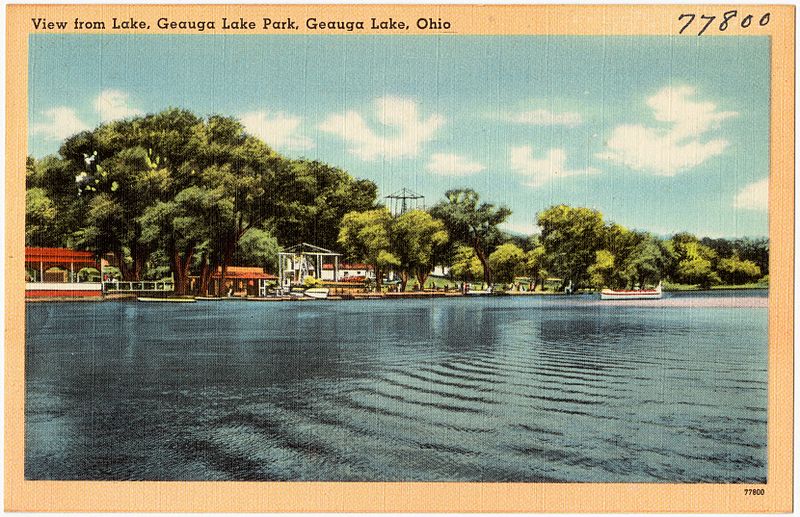
Across the Midwest, meanwhile, “trolley parks” – often built by trolley companies at the end of town streetcar lines to increase weekend ridership – soon appeared, often built around “sunlite pools,” dance halls, and race tracks.
The story of GEAUGA LAKE (Jee-AH-guh) starts just that way. Dating back to the mid-1800s, the little park in Aurora, Ohio began humbly enough as a “picnic pond,” leveraging a new train connection to Cleveland, just 20 miles northeast. Like many of its contemporaries, Geauga Lake evolved slowly; gradually. You might think of it as a pleasant place for a Sunday afternoon, where visitors from the “big city” could relax, picnic, fish, and even dance atop a full-sized steamship built to encircle the 60-acre lake in the woods.
Poetically, an 1880 publication said of Geauga Lake, “Without exception, this is the most charming place to spend a leisure day…”
The Geauga Lake name and its formal start as an attraction came in 1887. Two years later, a steam-powered carousel became the park’s first ride – the same sort of spark that would serve as the prologue to many similar, local family parks in the era, from Cedar Point to Conneaut Lake; Coney Island to Knoebel’s… parks that weren’t built all-at-once or master-planned, but shaped by opportunity, economy, accident, and chance.
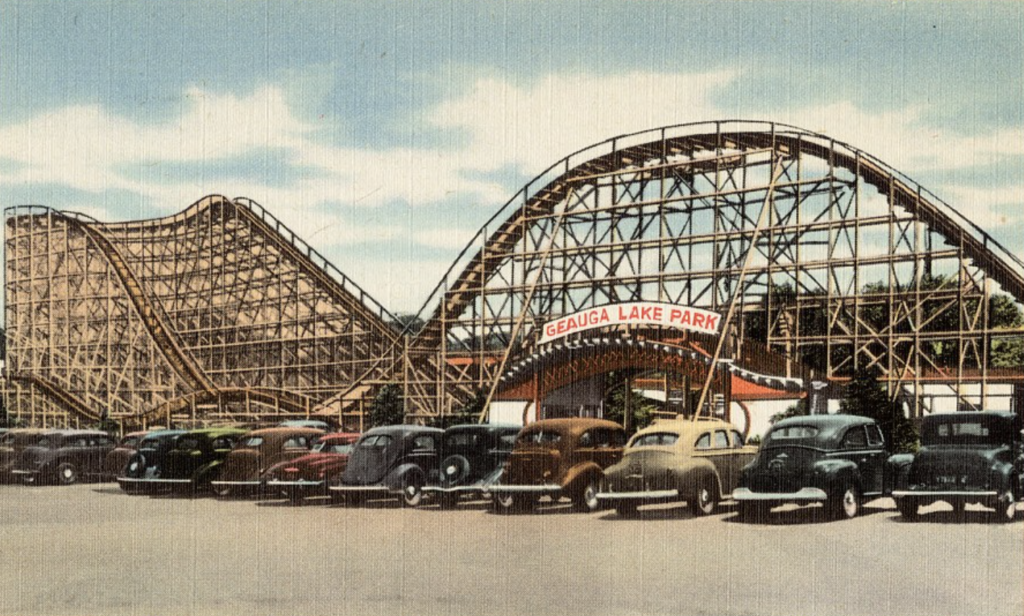
To check back in with the park once automobiles had replaced steamtrains would be to find Geauga Lake now reigned over by the Big Dipper – at 65-feet-tall and 35-miles-per-hour, the world’s tallest and fastest roller coaster at its 1925 opening. Think about it: the children-of-the-children who’d first ridden that carousel would now find themselves firmly in the midst of the Golden Age of the Roller Coaster. That’s the scale of the lifetimes of parks like Geauga Lake, where roller coasters are held aloft as much as memories as by timber.
Like any of its contemporaries, Geauga Lake’s story could be told as a doctoral thesis, digging into the changing hands of ownership, eras of expansion and retraction, or debilitating fires and destructive floods. But frankly, the most unusual thing about Geauga Lake’s first century or so is that it did what so few other “picnic parks” were able to do: it survived. Even as scores of “trolley parks” simply flickered out of existence over the latter half of the 20th century, Geauga Lake prospered.
A Whale of a Tale (1970s)
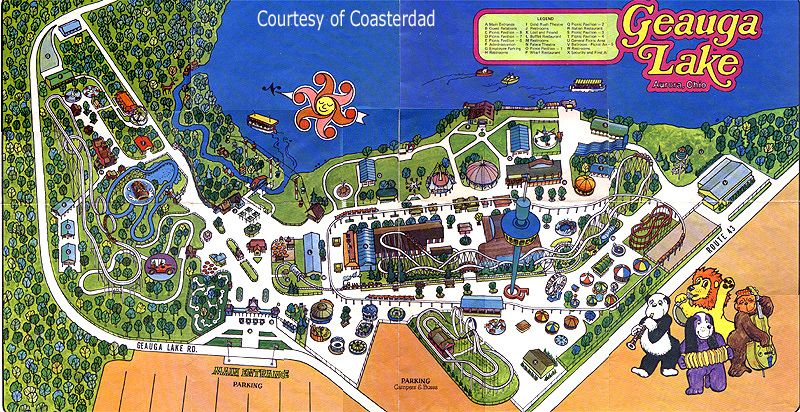
So for our purposes, we’ll leap head on the park’s timeline. In 1968, little Geauga Lake fell under new management. As told in Jim Futrell and Dave Hahner’s Geauga Lake: The Funtime Years, that year, a group of former leaders from Cedar Point (a similarly-surviving amusement park less than 100 miles west in Sandusky, Ohio) together created a new company they called FUNTIME INC. with the express intention of buying Geauga Lake. For $5 million, Funtime purchased the park outright, committing the kind of professional resources and financial backing that too many other local, family-owned parks would spend the ’70s and ’80s starving without.
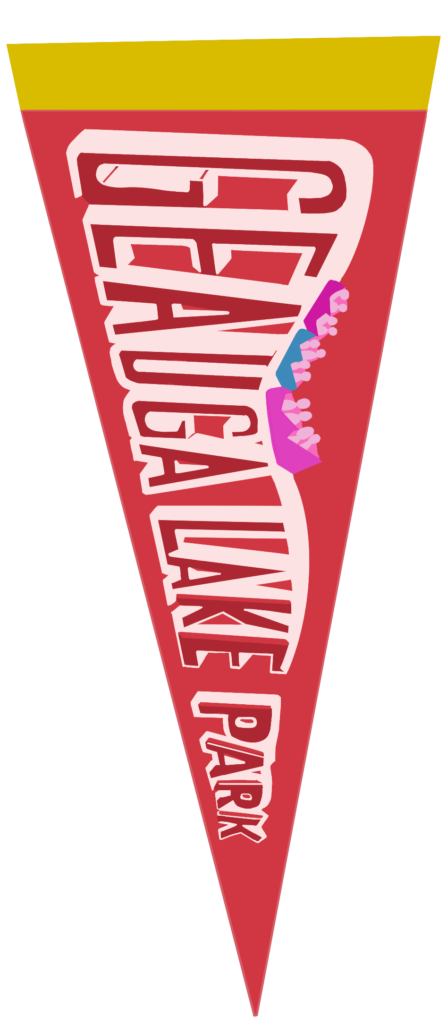
By then, mind you, the expanding Geauga Lake was a playground for the great-grandchildren of its first visitors, who now stepped into a more modern amusement park. The ’70s would eventually see the addition of the towering, 21-story Skyscraper observation tower, the Gold Rush log flume, the Merrie Oldies antique cars, a half-dozen dizzying flat rides, and eventually, two ultra-classic Arrow coasters: the Double Loop and the Corkscrew. Even as local amusements like Euclid Beach Park, Chippewa Lake Park, and Idora Park shuttered one after another, Geauga Lake thrived.
Even still, what makes Geauga Lake’s story so interesting isn’t even what was happening within the park, but around it… After nearly a century settled onto the western shore of Geauga Lake, the longstanding amusement park built on generations of tradition and memories gained a splashy new neighbor…
In the early 1960s, Milton Shedd and three of his fraternity brothers from UCLA’s class of ’44 had started to get serious about their desire to build an underwater restaurant and marine life exhibition on the man-made Mission Bay in San Diego, California. Ultimately, the engineering that would’ve allowed such a build was deemed infeasible – or at least, prohibitively expensive – so that Shedd, Ken Norris, David Demott, and George Millay had decided to do something different.
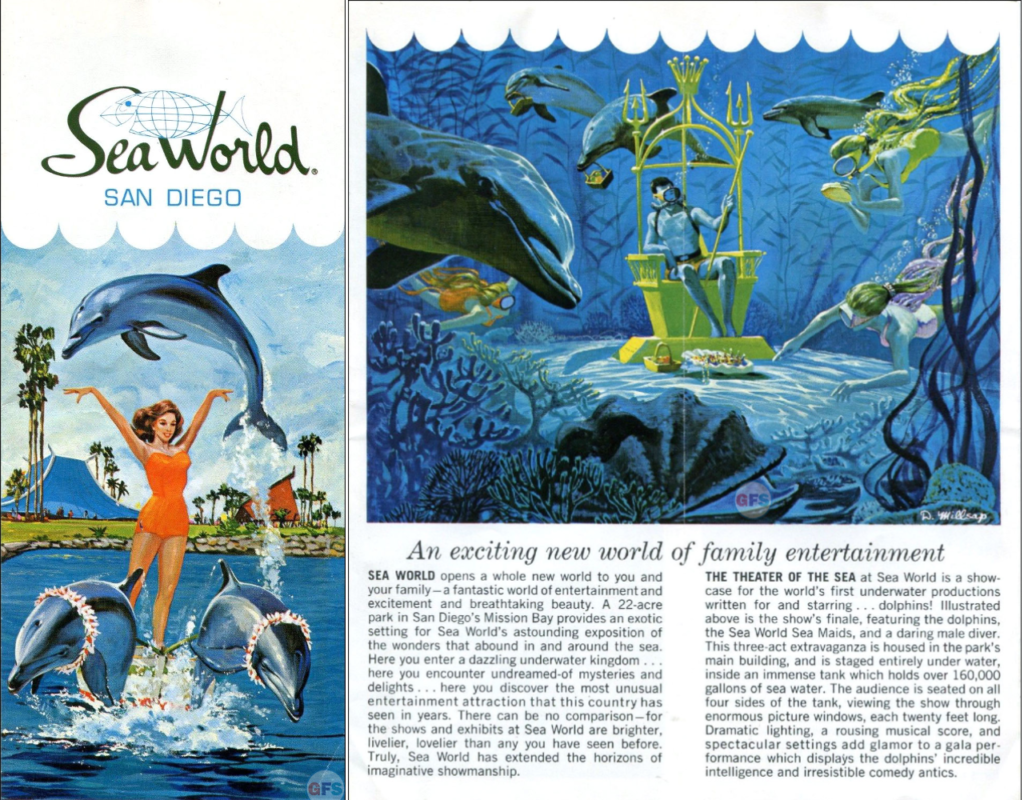
The first SeaWorld opened on Mission Bay in 1964, and was an unexpected hit right out the gate. Especially after the 1965 acquisition of an orca named Shamu (the first killer whale ever on display in a theme park), SeaWorld became a widely recognized landmark; a new kind of attraction in the increasingly refined industry of post-Disneyland parks.
Shedd and company quickly began a search for a suitable location for a second SeaWorld, particularly focused on the area between Detroit and Pittsburg – the “Steel Belt,” with the largest concentration of highly-paid, blue collar workers in the country.
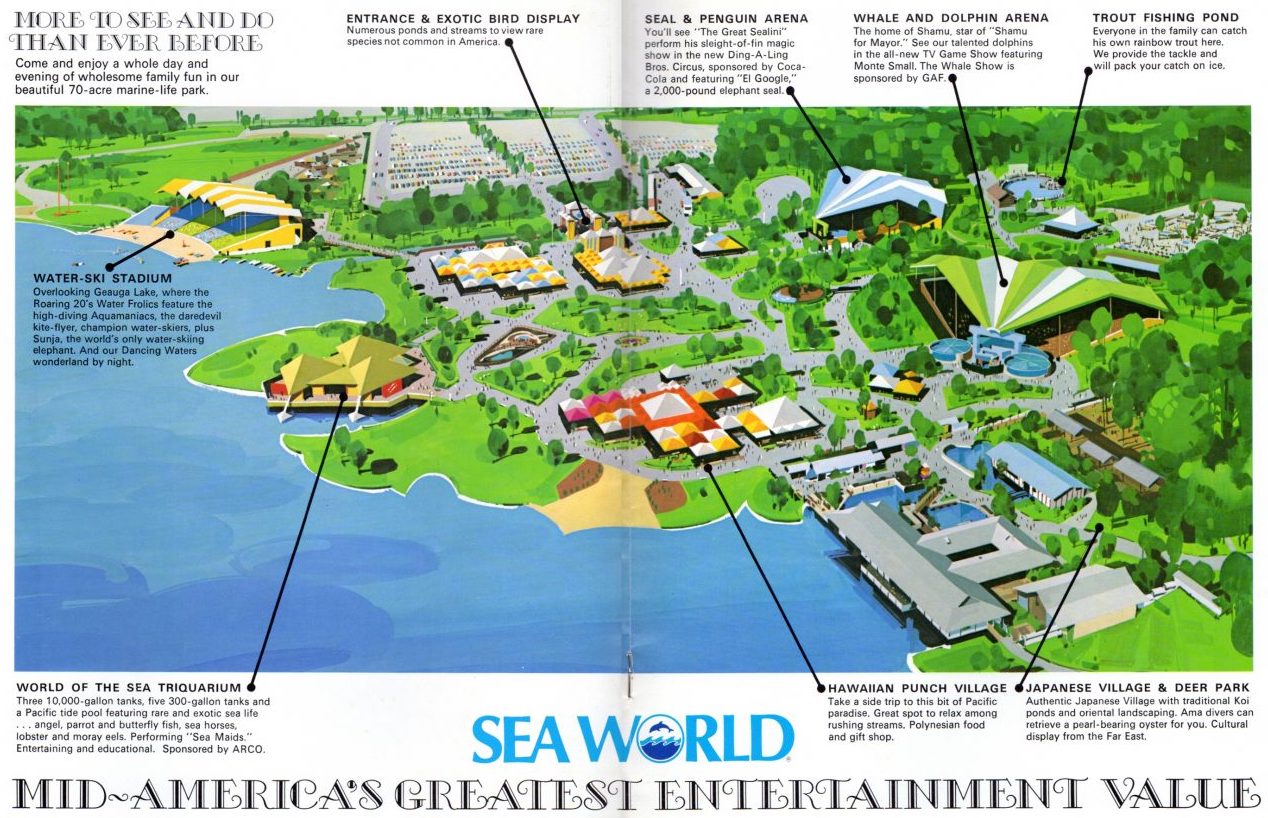
Though SeaWorld was settling on the idea of building a park on Ohio’s Lake Milton (near Youngstown), Funtime Inc. reportedly reached out with an unusual suggestion: to take up residence opposite their own amusement park, on the east side of Geauga Lake. It made sense. Aside from the region’s abundance of working class families, in the 1970s, it was estimated that 70% of Americans lived within 500 miles of Cleveland, and that most of them would never see the ocean or at least didn’t have easy access.
In 1970, SEAWORLD OF OHIO opened just 1,200 feet across the water from Geauga Lake Park. Using the hilly terrain of the east side allowed SeaWorld to construct two arenas into the natural contour of the land, topped by perfect, nautical, mid-century, and still-remembered clamshell canopies.
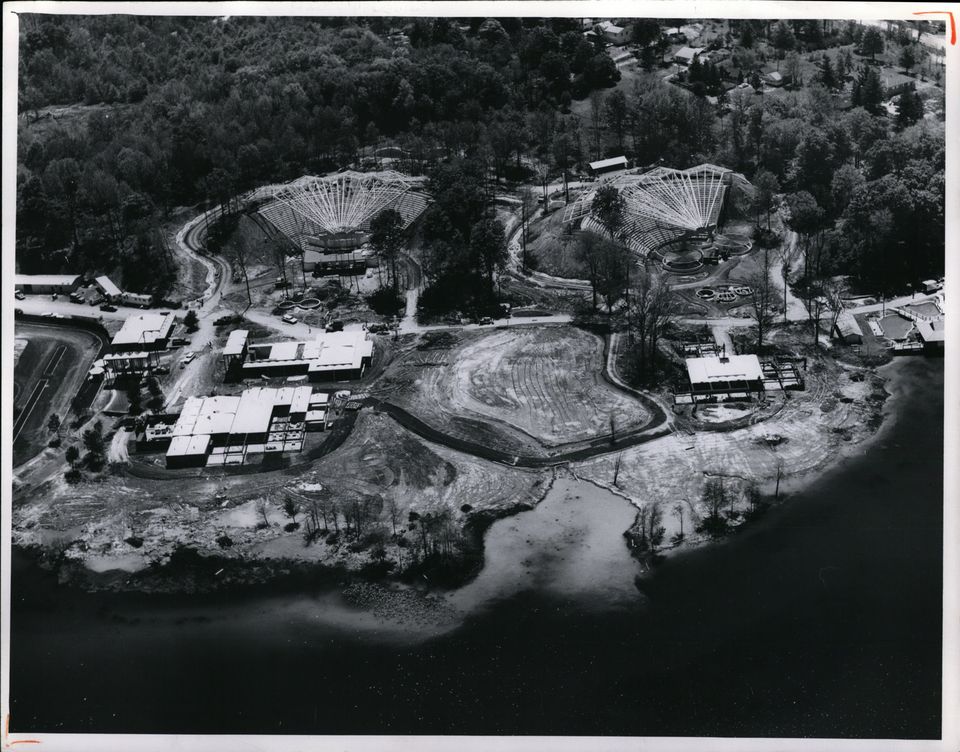
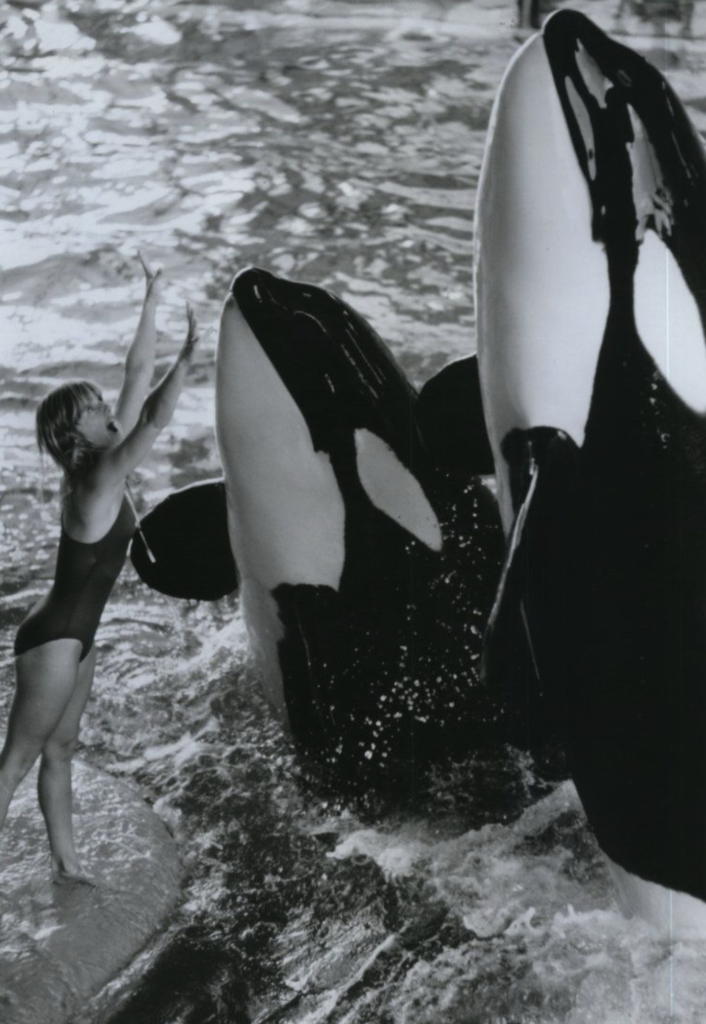
It’s difficult to overestimate the esteem that SeaWorld of Ohio carried for generations of Northeast Ohioans. It’s impossible to explain how every square foot of the concept art above can be mapped onto the real memories of millions of Midwestern families for whom SeaWorld of Ohio was visited as least as regularly as the dentist. Summer afternoons ducking into the iconic pyramids of the Aquarium of the World to avoid a thunderstorm, or touching stingrays in their clockwise flight through a habitat on its porch; watching pearl divers slice through crystal pools in the Japanese Village; finding a shaded seat in the Water Ski Stadium, with the roller coasters of Geauga Lake as a backdrop to the Baywatch Ski Show; climbing winding wooded paths around the Seal & Penguin Arena (later, home to the Clyde & Seamore comedy duo); and of course, deciding whether to brave the “Splash Zone” at the Whale and Dolphin Arena…
The 50-acre park cost $5.5 million to build, but quickly proved worth every penny. SeaWorld of Ohio opened May 29, 1970 (for context: about 16 months before Walt Disney World). According to Futrell and Hahner’s Geauga Lake: The Funtime Years, SeaWorld Ohio more than doubled its attendance predictions, drawing 1.1 million guests in its 100-day first season (no doubt providing SeaWorld all the evidence it needed to justify the construction of its Orlando park in 1973).
A Perfect Pair (1980s)
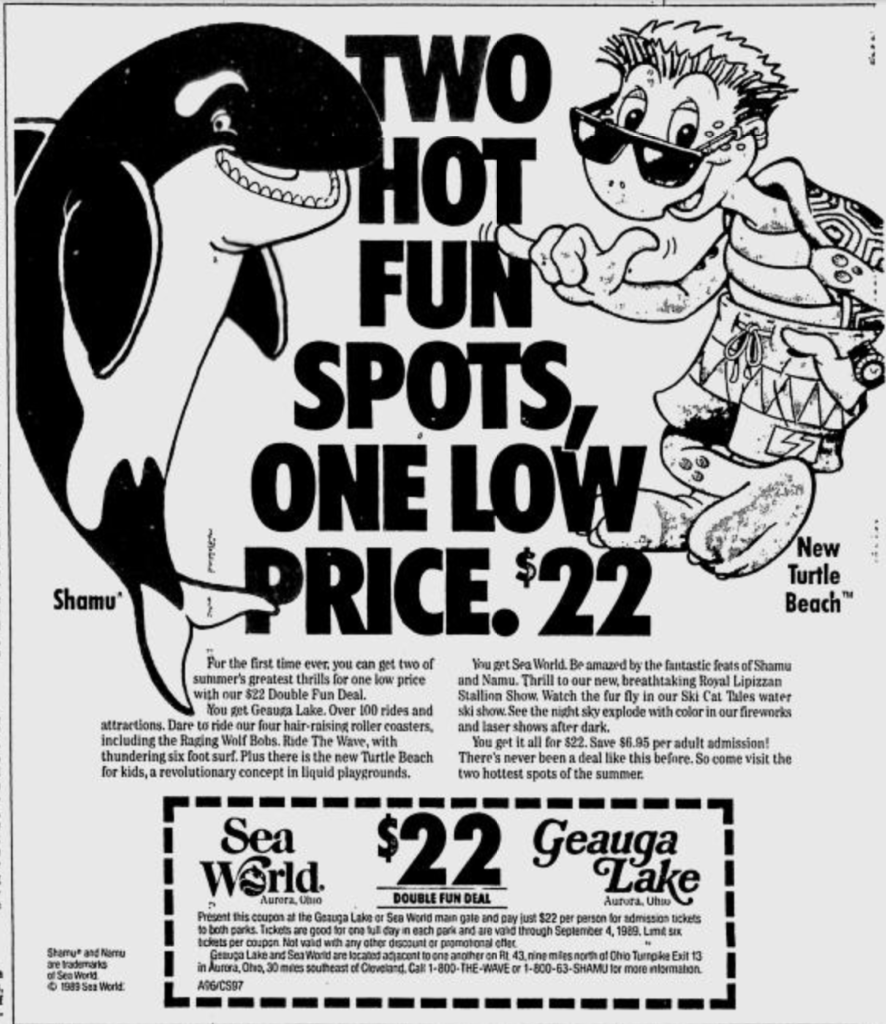
Even so early in the story, it’s worth repeating so that we aren’t numb to the oddity of it: a 60-acre, spring-fed lagoon 10 miles from the nearest interstate and 40 minutes southeast of Cleveland with a small, family amusement park on one shore, and a small, family marine life park on the opposite.
And despite the seeming competition one might expect between two so precariously positioned parks, it would be impossible to characterize Geauga Lake and SeaWorld of Ohio as being anything less than a perfect pair. Predating Walt Disney World’s 1971 opening, Geauga Lake and SeaWorld had created a mini, multi-park resort beloved by locals – poised to evolve independently, yet forever-parallel to one another.
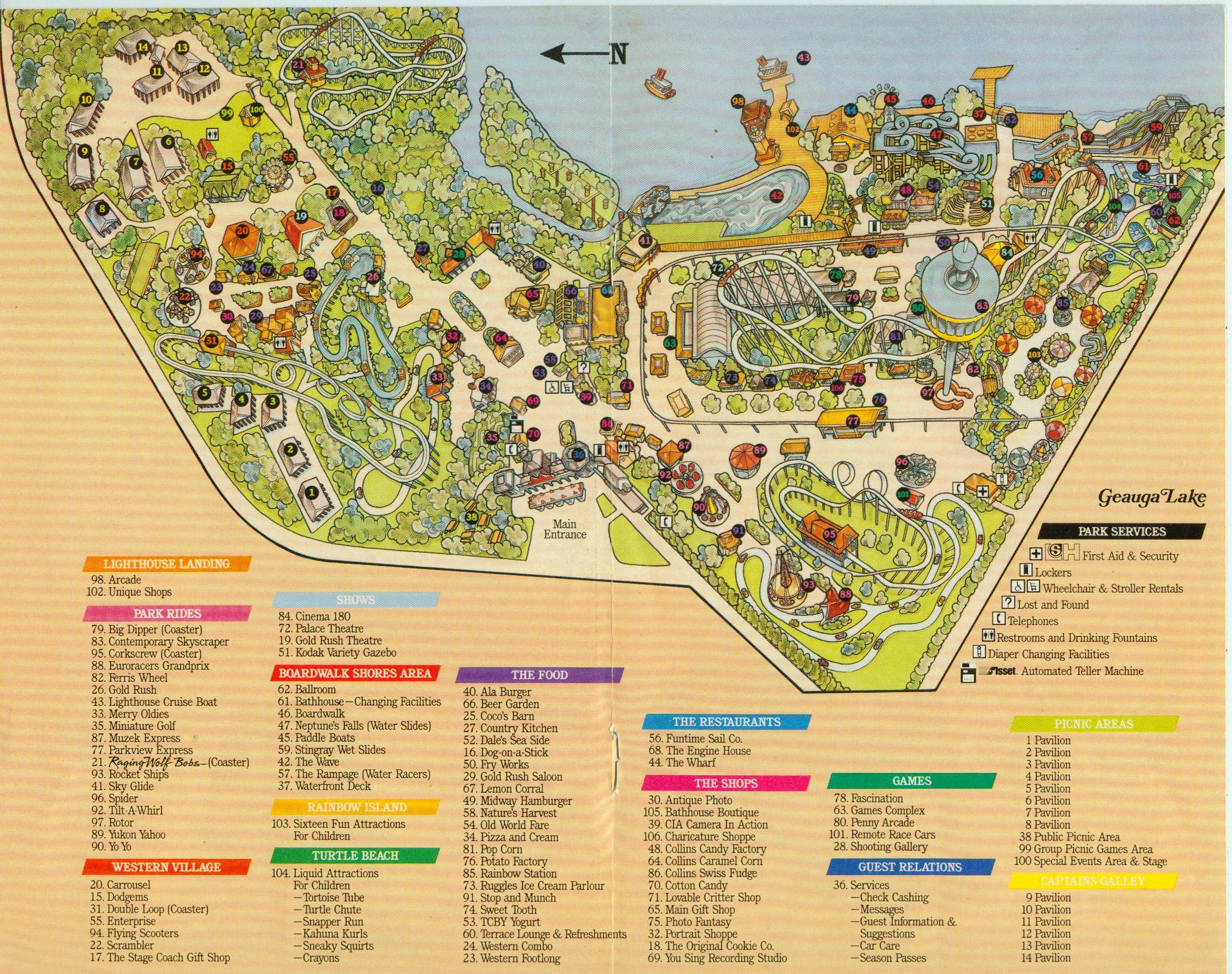
By the end of the ’80s, Geauga Lake boasted not just the inverting Arrow Double Loop and Corkscrew of the ’70s as well as the classic Big Dipper, but the starring new Raging Wolf Bobs – a landmark $2 million wooden coaster. The park had also added the Boardwalk Shores waterpark along the lake itself, and Turtle Beach – a children’s water play area.
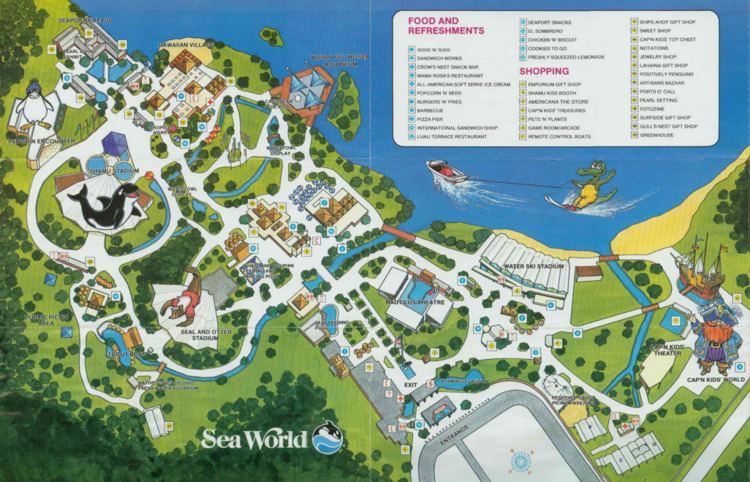
SeaWorld, too, was growing into its brand and place, filling an expansion pad north of the water ski stadium with Cap’n Kids World. Tried-and-true SeaWorld staples like the Sea Lion & Seal Community Pool and the Penguin Encounter had appeared, and Clyde & Seamore had taken up residence in the Seal and Otter Stadium.
If Funtime’s bet was that the two parks could serve as complementary attractions and turn the fields and farmlands of Northeast Ohio into a family destination for the region, they clearly succeeded. The ’70s and ’80s had evolved both Geauga Lake and SeaWorld into strong, standalone, modern parks. Which is why we can again jump ahead on the timeline… Major changes were soon to come to both of Aurora, Ohio’s little family parks, and by the end of the ’90s, everything would change.
New Management, New Millennium (1990s)
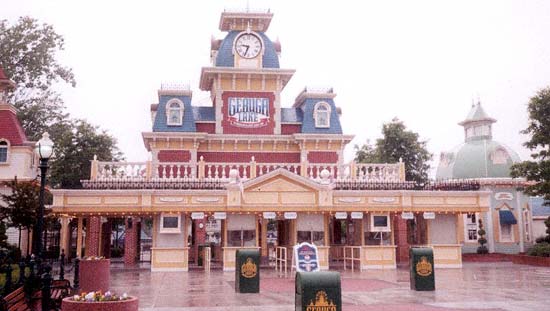
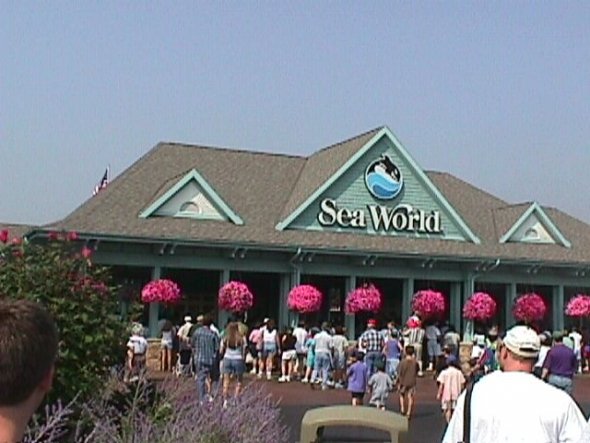
By the 1990s, the amusement park industry looked a world away from the family-owned local parks of yesteryear. A new generation of master-planned parks opened A.D. (that is, After Disney) had risen across the country, and the few “picnic parks” that remained had either settled into their small-town niche (Knoebel’s, Enchanted Forest, Idlewild, Santa Cruz Beach Boardwalk) or been propelled into regional attractions, shuffled into the industry’s era of consolidations, acquisitions, “Coaster Wars,” and “studio parks.”
And in the sleepy town of Aurora, Ohio – population: 13,556 – both Geauga Lake and SeaWorld Ohio were about to evolve.
Geauga Lake
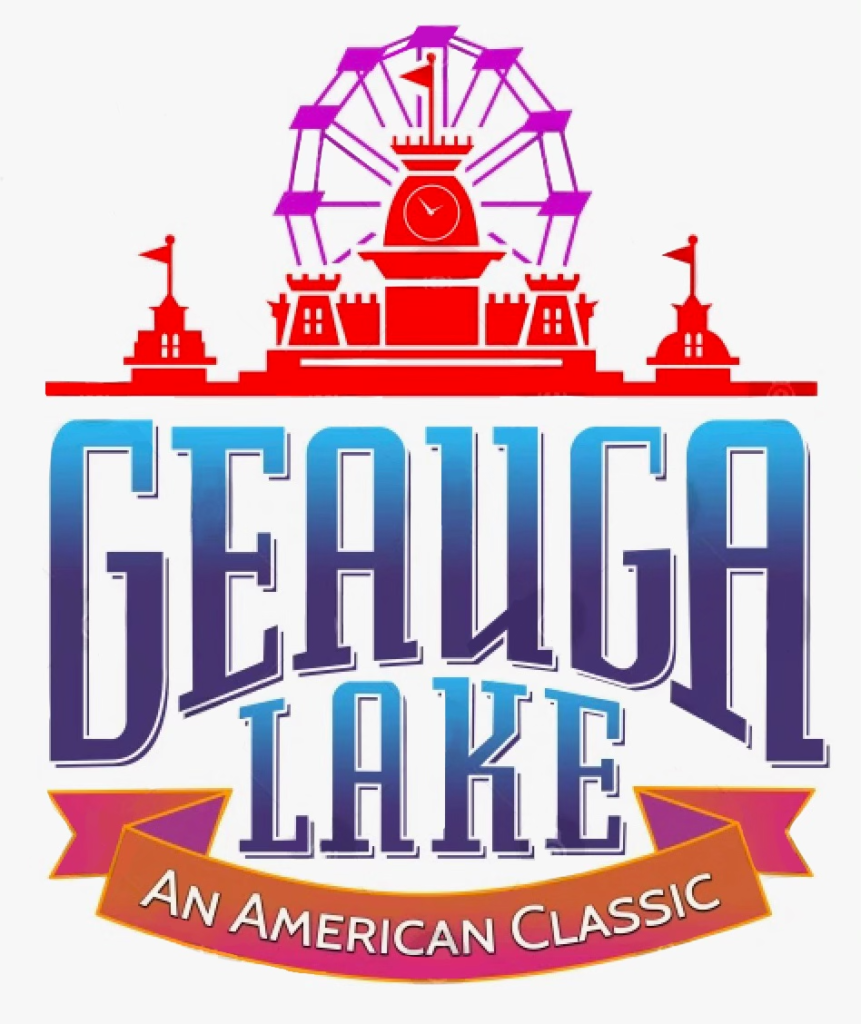
In 1995, Geauga Lake changed hands again. After nearly three decades of owning the park, Funtime Inc. was purchased in full by an up-and-coming amusement park operator called PREMIER PARKS (owners of Frontier City in Oklahoma). Along with Geauga Lake, the purchase of Funtime also gave Premier Parks ownership of New York’s Darien Lake family park and the Wyandot Lake waterpark in Columbus, Ohio.
Premier Parks’ appetite was insatiable. In 1996, the company would acquire Denver’s Elitch Gardens and New York’s Great Escape as well as three standalone water parks. In 1997, they added Kentucky Kingdom in Louisville and Marine World near San Francisco, plus six amusement parks in Europe. In a matter of years, Geauga Lake had gone from a quaint, independent family park to one of nearly two dozen in Premier Parks’ portfolio.
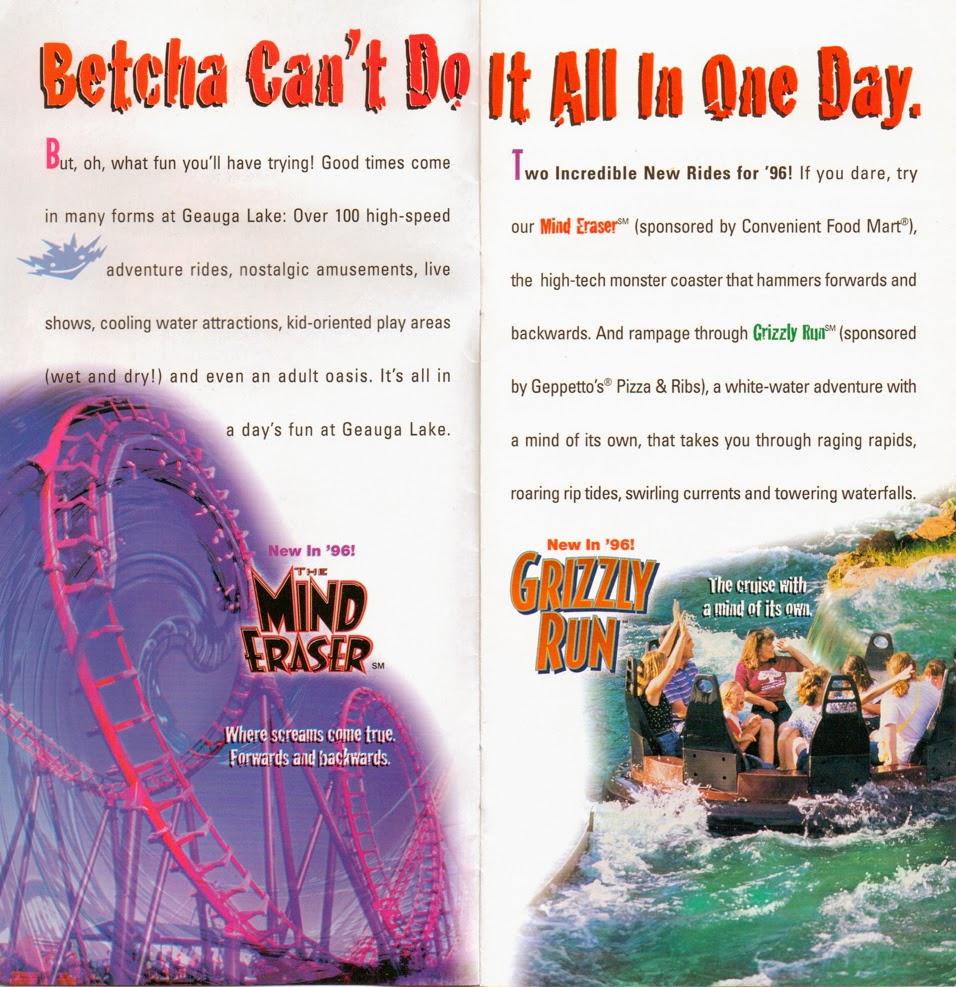
Just as Funtime had been able to invest in the park in the 1970s the way a family-operator couldn’t, Premier Parks’ investment in Geauga Lake in the ’90s propelled the park’s lineup forward in a way Funtime couldn’t have imagined. For better or worse, Premier was as ambitious within its parks as it had been acquiring them.
In 1996, the park added The Mind Eraser (a Vekoma Boomerang) and the Grizzly Run rapids ride. In 1997, a first-generation Intamin drop ride called Mr. Hyde’s Nasty Fall debuted, looming behind a “drive-in theater” marquee at the park’s entry, and Geauga Lake’s waterside waterpark expanded with a play place called Hook’s Lagoon.
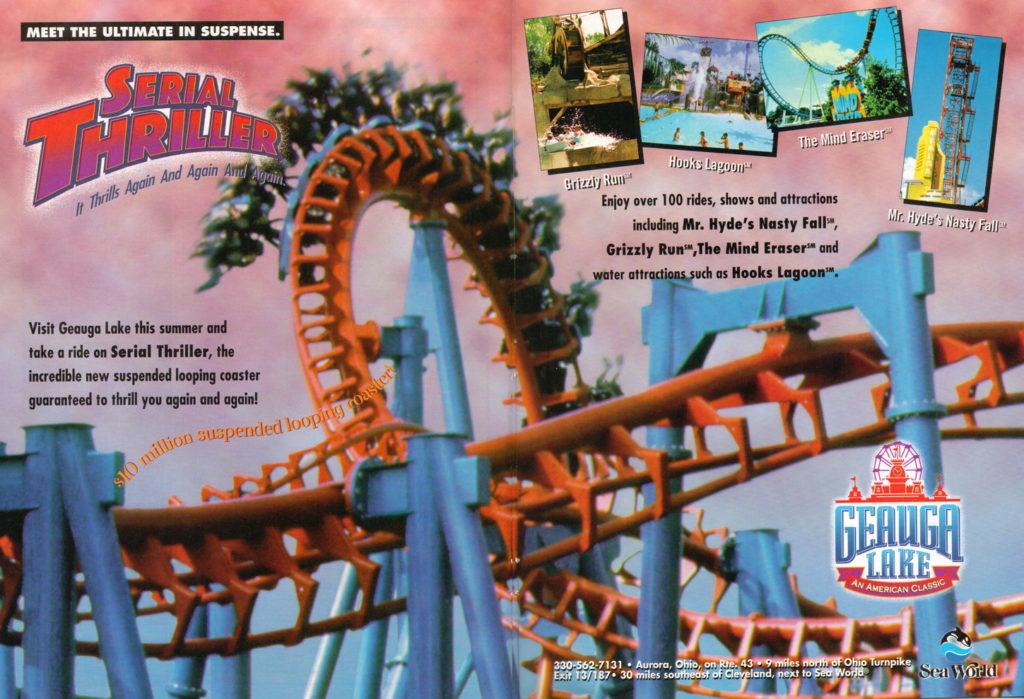
In 1998, Premier supercharged the park with its biggest thrill ride since the Raging Wolf Bobs a decade earlier. Serial Thriller – a Vekoma Suspended Looping Coaster – joined the lakeshore. In retrospect, even the first three years Geauga Lake spent under Premier Parks were transformative, and it’s easy to see how that progress no doubt brought hopes and fears to Aurora. After all, investing in big thrills surely changed the atmosphere of the “American Classic” park…
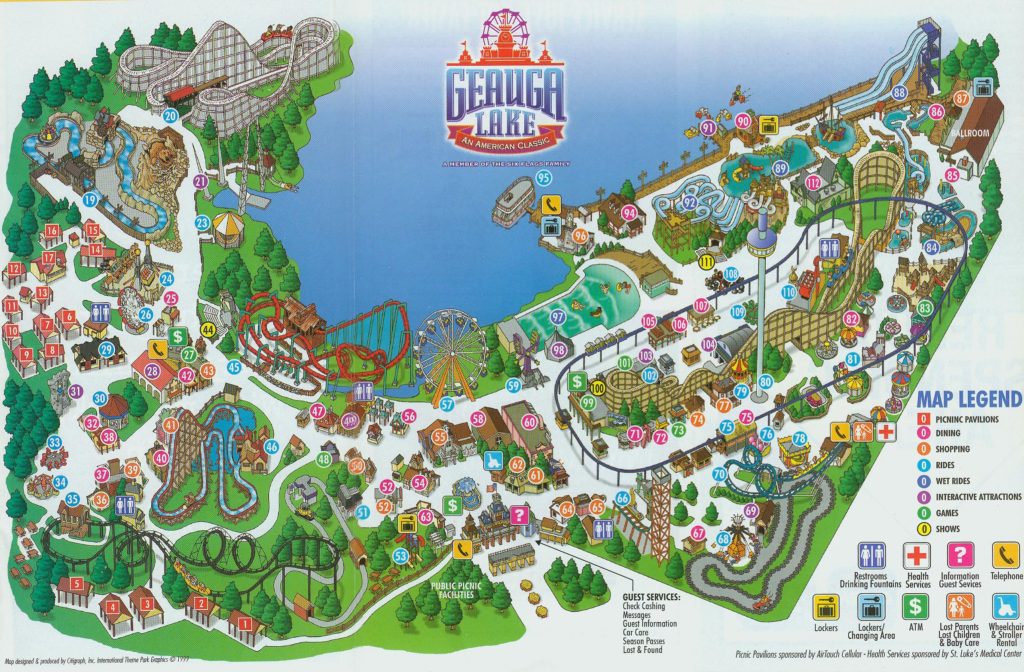
But amazingly, when the park closed for the winter in 1999, workers carefully dismantled any signage with the “Geauga Lake” name… This is where things get wild…




What a fantastic place! Wish it was still there. It just doesn’t make sense. Combined the two parks should of been a must visit destination for people nationwide. A huge loss for Northeast Ohio.
I grew up not far from Geauga Lake on Pettibone Road in Solon, Ohio. We rode our bikes to the park in the 1940’s. We often got in with various companies employee days as they just thought we were kids who belonged to the group.
My memories of the early years were frozen custard, the bug, the 4th of July fireworks on the lake that my parents would bring us to see and I was scared to death! The swing ride that seemed yo spin you over the lake!
Living out in the country, a rural area, with the ability to go to such a fun place so easily was quite wonderful!
In the evening my parents would take us there and it seemed far different at night than in the daytime. I loved the roller coaster and would ride over and over again.
Now forward to my early teens….1948…on. The roller rink. I skated almost every night in the summer. What could be better than an open air roller rink on a lake with a live organist playing music to skate to all evening! It was wonderful as dance roller skating was very popular.
Later the rink burned down and I was heartbroken as I had spent so many happy hours there.
As a summer job when I was in college ( graduated high school in 1952) I was a lifeguard at the Lake….I also lifeguarded at the pool in Geauga Lake but I much preferred the job at the beach.
My story is before all the changes that made it into a huge attraction but I loved the years it was just a wonderful small beautiful park.
BTW I have never found frozen custard as good as that at Geauga Lake and there was no other roller skating rink with solid wood floors, an organist , and the breezes coming off the lake on hot summer nights in Ohio!
Elaine Kertes Clabeaux
eac@pacbell.net
Was chosen to be “kissed” by Shamu in 1972!
My boyfriend and I now my husband) use to go to the park and Sea World when we were 17 years old. Sitting in the wooden bleachers at the time, when the performer came up to the stands to choose a person, my boyfriend was pointing at me! Down by where Shamu was in the pool, she said for me bend sideways over the pool, Shamu came out of the water and touched the side of my face! Memories! Wish I still had the picture they took with their Polaroid camera!
I’m 81 and my siblings are all deceased so I can’t ask them. Do any of you remember little overnight cottages you could rent and stay at being there? This was in the 40’s and I have a vague memory. Thx
I grew up across the street from Geauga Lake in the neighborhood across the street. I grew up there and I hated the way they closed down. We had a pass where we could swim in the lake. I miss that amusement park.😢
I still miss the Geauga Lake of the 80’s. I have so many memories from Dad’s company picnics, to wading in The Wave (the original) anticipating the big wave action, to meeting my first love while in line to ride the Raging Wolf Bobs! It almost makes me cry.
I really enjoyed this. Thank you for posting about it on Strange and Hidden. I have memories of GL of course and SW growing up (my first coaster was the Double Loop in the 70’s), taking my kids there, and then seeing it die. I saw the mold in the bubble gum vending machine as my friends’ family and mine climbed the steps to the monorail. I mourned the loss of the Rotor–which was my favorite ride. I got to ride it once about 23 times or more in a row because no one was in line. There was a man that stayed in it all day long that I recall. So many memories of Aurora and cutting through the traffic by heading east from Route 8 and cheating at the stop light with my ex in the 90’s. And somewhere, I have a penny that was stretched and stamped in 1996.
My memories stretch across 5 decades.